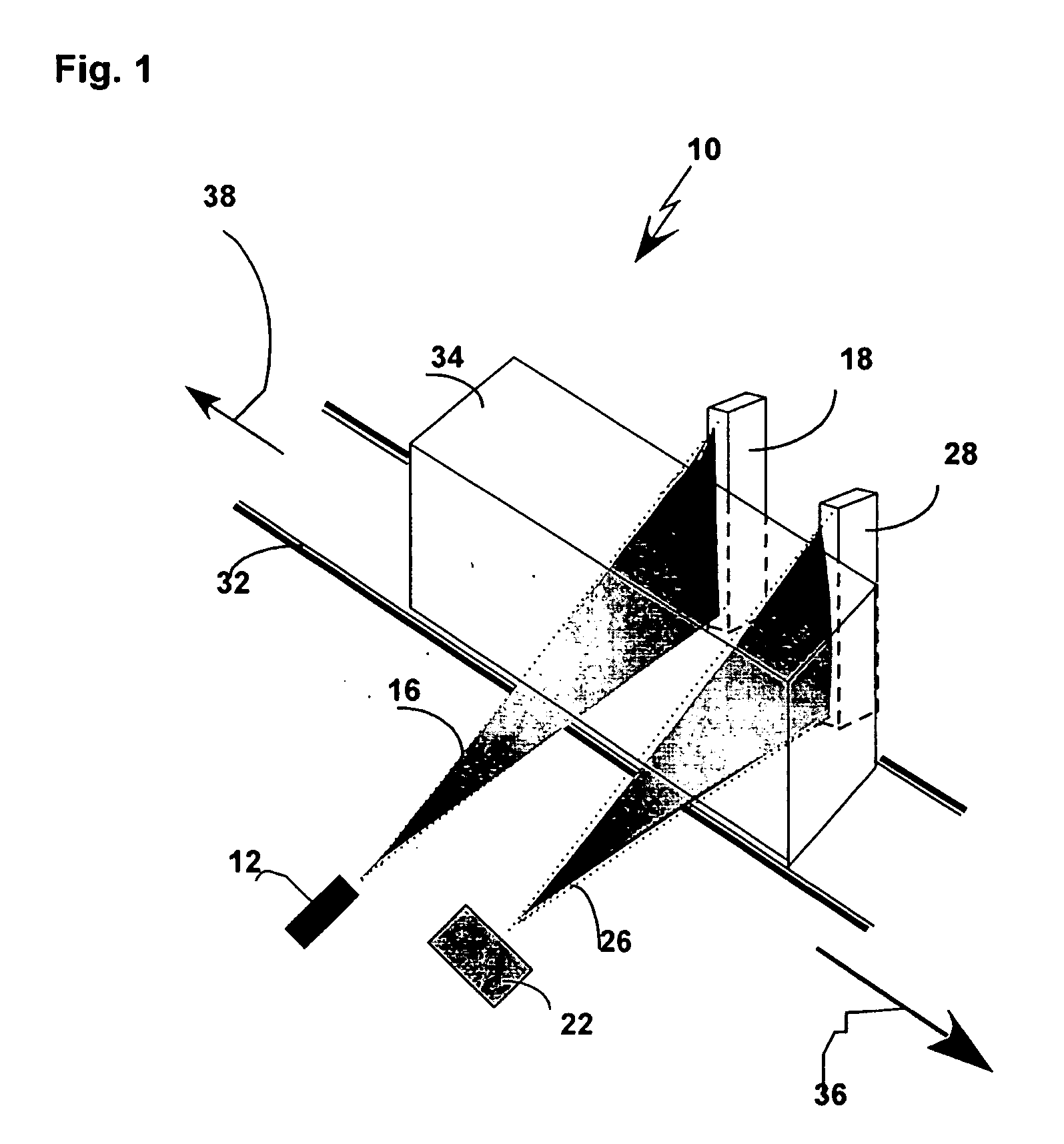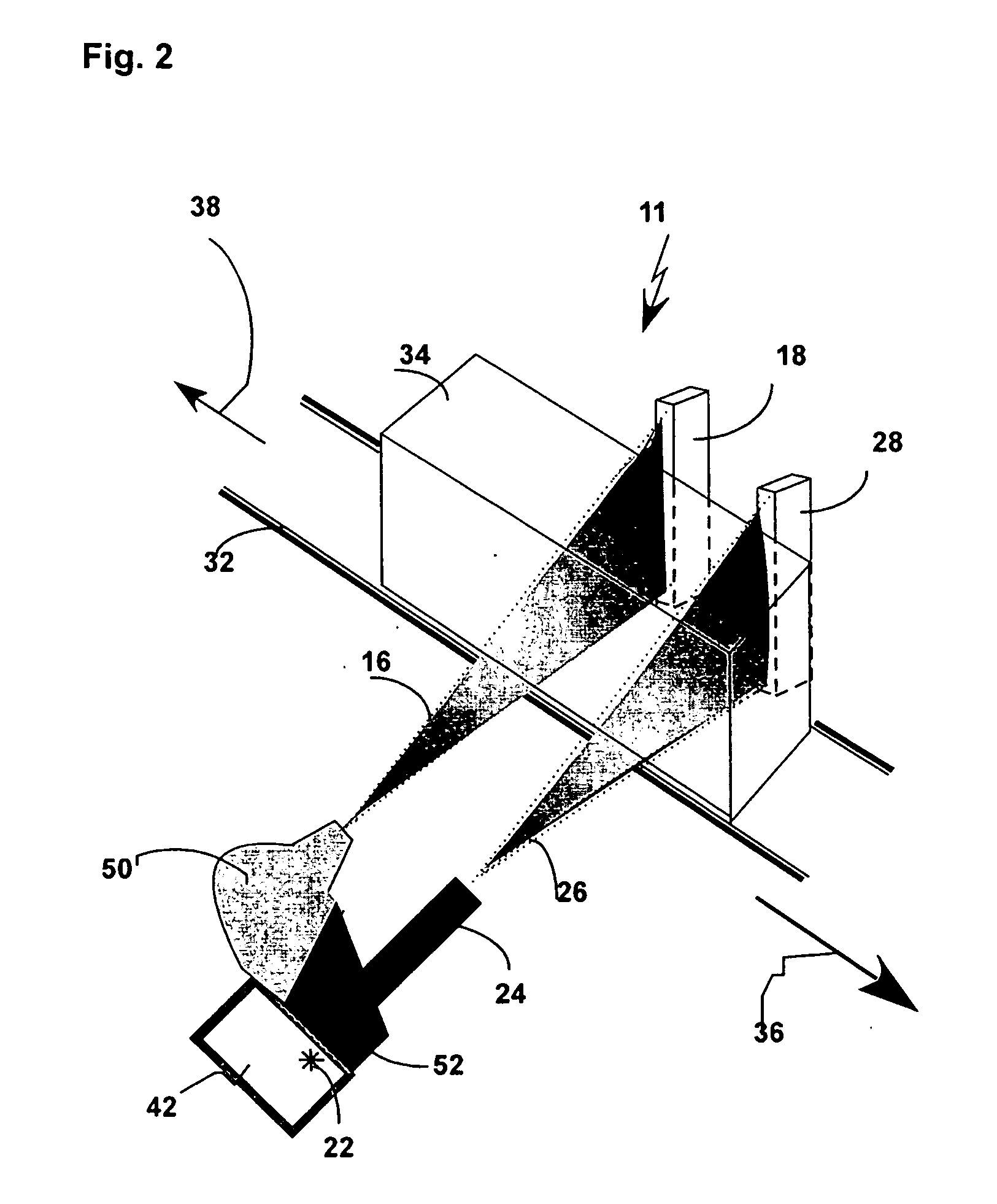Method and equipment for discriminating materials by employing fast neutron and continuous spectral X-ray
- Summary
- Abstract
- Description
- Claims
- Application Information
AI Technical Summary
Benefits of technology
Problems solved by technology
Method used
Image
Examples
first embodiment
[0039] Referring to FIG. 1, the equipment 10 according to the invention comprises a container convey track 32, at least one inspected containers or other voluminous objects 34 that can be placed on the container convey track 32, a fast neutron source 12 for producing neutrons, a continuous spectral X-ray source 22 for producing X-rays, a neutron detector array 18 having a high detecting efficiency with respect to neutron, an X-ray detector array 28 having a high detecting efficiency with regard to X-ray, a fan-shaped neutron beam 16 and a fan-shaped X-ray beam 26.
[0040] The fast neutron source 12 is one of a neutron generator and isotope neutron source. The continuous spectral X-ray source 22 is one of an electron linear accelerator (Linac) and an X-ray machine. The fast neutron source 12 and the continuous spectral X-ray source 22 are located at one side of the container convey track 32. The neutron detector array 18 and the X-ray detector array 28 are located at opposite side of t...
second embodiment
[0044] Referring to FIG. 2 and FIG. 3, another equipment 11 according to the invention comprises a container convey track 32, at least one inspected container or other voluminous object 34 that can be placed on the container convey track 32, an accelerator 42 which can produce continuous spectral X-ray beam and part of which is converted into photoneutrons, a neutron detector array 18 and an X-ray detector array 28.
[0045] Accelerator 42 is located at one side of the container convey track 32. The neutron detector array 18 and the X-ray detector array 28 are located at another side of the container convey track 32. A special designed X-ray distribution collimator 52 is installed at the X-ray beam emitting window of the accelerator 42. And the X-ray distribution collimator 52 divides the X-ray beam produced by the accelerator into two beams: one beam is collimated by the X-ray beam-limited collimator 24 so as to form a fan-shaped continuous spectral X-ray beam 26; the other beam 58 is...
PUM
 Login to View More
Login to View More Abstract
Description
Claims
Application Information
 Login to View More
Login to View More - R&D
- Intellectual Property
- Life Sciences
- Materials
- Tech Scout
- Unparalleled Data Quality
- Higher Quality Content
- 60% Fewer Hallucinations
Browse by: Latest US Patents, China's latest patents, Technical Efficacy Thesaurus, Application Domain, Technology Topic, Popular Technical Reports.
© 2025 PatSnap. All rights reserved.Legal|Privacy policy|Modern Slavery Act Transparency Statement|Sitemap|About US| Contact US: help@patsnap.com



